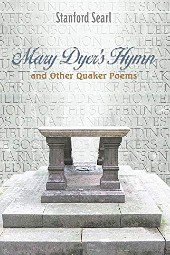Synopsis
Mary Dyer’s Hymn and other Quaker Poems constructs poetic songs which open-up multiple dimensions of an embodied sensibility of the conflicts between Puritans and Quakers in 17th century Massachusetts. There are a number of themes as presented in these poems, including:
- Many of the poems sing about how in 17th century Massachusetts, the embodied soul matters in Quaker writing, action, and thinking;
- Some of the poems enter into a visionary consciousness of 17th century Quaker men and one Quaker woman (Mary Dyer) who demonstrate what it meant to be a prophet and then a martyr as well;
- At times, the poems present a satirical critique of key Puritan assumptions about how they thought that Quakers were dangerous heretics, aligned with Satanic impulses and thought that Quakers were possessed by error and sin;
- Some of the poems illustrate how many of the Quaker prophets felt the immediate presence of the Divine or God through the experience of the indwelling Christ;
- A few of the poems explore the imaginative, visionary relevance of my 9th great-grandfather, a contemporary figure and his friend Roger Williams, both dissidents and founders of Rhode Island;
- The poems offer visionary, expressive, and expansive language drawn from the types and shadows of Old Testament prophets;
- The poems illustrate the importance of Roger Williams and his vigorous dissent from the Puritan orthodoxy, and his sympathy for the Narragansett native people.
About the Author
Stan Searl, Jr., Ph.D. was the Carroll Scholar in residence at Pendle Hill when the COVID-19 global pandemic hit. His research involves investigating the meanings of the “Gathered Meeting” in Quaker experience.






